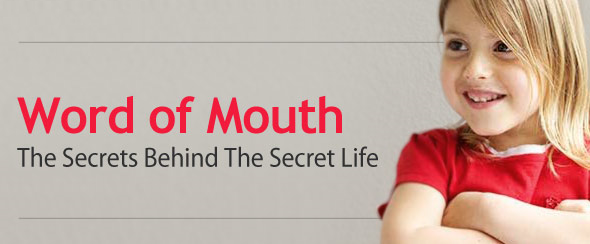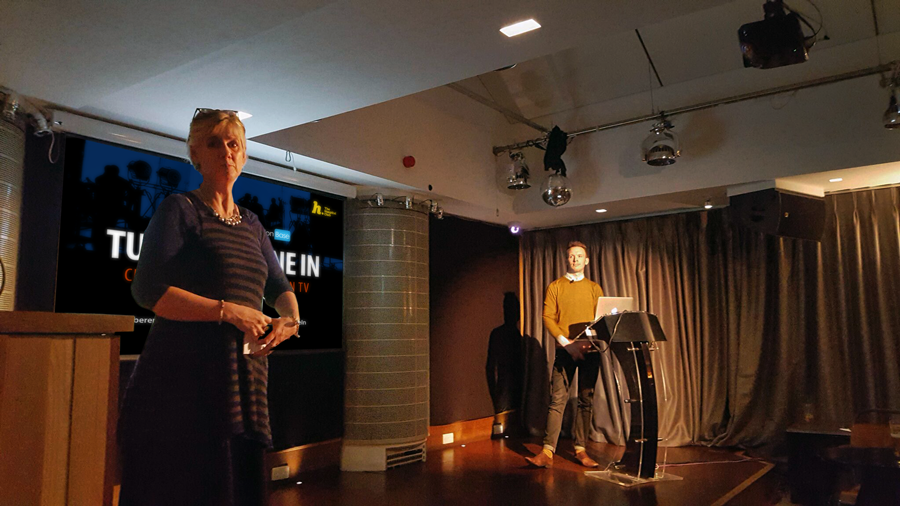
We were delighted to welcome more great speakers to our latest Turn On, Tune In event at The Hospital Club earlier this month including RDF Television duo, Teresa Watkins & Sam Burr, discussing the making of the hit Channel 4 show, The Secret Life of 4, 5 and 6 Year Olds.
The observational documentary, which followed the antics of nursery-aged children using hidden cameras, pulled in more than 2.5 million viewers for an initial one off show, which lead to the commissioning of a 6-part series later in 2015. Teresa (Executive Producer) and Sam (Development Producer) shared how they brought Channel 4’s most popular factual show of the year to the screen, and shed light on the many pitfalls and ethical dilemmas that working with such young children can bring.
Teresa revealed that the original idea for the show came from simple scientific tests, including the infamous marshmallow test created in the 1960s, and what tests like these can infer about the future lives of the subjects: “The basis of that test is that children of about 4-years old are offered a marshmallow by somebody in a white coat, with their parents nowhere in sight. If they can resist eating the marshmallow for 10 minutes, they’re told they’ll be given two marshmallows. This test of delayed gratification turned out to be incredibly predictive for the future progress of the subjects, with career success, social standing and a range of other measures all higher for those who resisted the marshmallow and passed the test.”
“So the idea started as a science idea called ‘Experiments on Children’ which we were developing with Channel 4 Specialist Factual. We wanted to get a cohort of children, perform science experiments on them like the ones done in sixties, and then follow them to see if the results of these tests did actually prove anything about their future lives. We quickly realized that you just can’t do that – any science experiment worth its salt never tells you the results, because it’s completely unethical!”
“In the meantime, we started looking more and more at 4-year olds. It’s an amazing, magical age on the cusp of entering the social world of school. We thought perhaps rather than focusing on the experiments, what we really wanted to do was just get down to their level, and see as closely as possible what they get up to when there are no adults there.”

The next step was to prove that the concept would make good television: “We managed to convince Channel 4 to give us twenty grand to make a proof of concept. Over a weekend we borrowed a nursery, we cast 10 children, and we turned the cameras on them. We obviously couldn’t afford a full camera rig, so we had to make do with three cameras on sticks”
“We were still quite attached to the idea of the scientific experiments, so for the taster tape we created our own version of the marshmallow test using chocolate. Only one of the children failed the test and ate the chocolate, but that created huge ethical issues as to whether we should put this on television. We all felt that was a bridge too far – you just can’t show a categorical test that says ‘Your child is not going to go far in life’, it just isn’t ethical. But, we wanted to keep something of the science element within the series, just in a much softer way, and we eventually came up with the idea of the chocolate cake – leaving it in the nursery with no adults around and seeing what happened. This made it into a group experiment and took away the personal responsibility, whilst still creating some great talking points for our resident scientists.”
“Whilst that was a great experiment, we obviously couldn’t feature it in every episode across a 6-part series.” That’s where Development Producer, Sam Burr, came in: “My job was basically to come up with games that we could feature in the series. They had to be fun and exciting for the kids, they had to make good TV and spark interesting interactions between the children, and most importantly each game had to have a scientific point at the heart of it. We brainstormed a lot with the scientists, and all of our tasks were signed off by them.”
One of the highlights of the series was the rigged sweet machine: “I came across a picture of a giant gumball machine, and thought ‘wouldn’t it be great to drop that in the room and tell them not to use it’! We wanted to amplify the whole thing though, so we came up with the idea of a rigged machine, where one turn of the handle would release all the sweets on the floor. Would the kids be able to resist when the teacher’s out of the room? How would they react if someone turned the handle, and what stories would they tell about it to cover themselves? The scientists loved the idea, and in the end we got through more than 18 kilograms of Skittles, so an awful lot of the budget went on sweets!”
From a technical point of view, the series was filmed using several fixed rigs around the nursery, and Teresa pointed out that capturing the sound was vital to the success of the show, “The first thing I said to the rig company was that this is essentially a radio show with pictures – if you get the sound we’ve got a programme. Every single child had a radio mic, and at any given point during the six weeks of the shoot we could pick up the audio from any of the children – we didn’t miss a single thing.”
Making the programme also brought up numerous ethical issues, which began with the casting stage. “It took more than five and a half months to cast for the show – we saw about 200 children. Our 6-person casting team held a series of children’s parties at RDF with games and activities, looking for different aspects of the children’s personalities that would make them interesting for the show. Once we’d chosen the children we wanted to feature, there was then a big process of essentially trying talk their parents out it. Our talk of doom went something along the lines of ‘Do you realise that your child is going to be talked about on Twitter? Do you realise that your child may do things in there that you don’t want to see on television? That they may do things that they’re embarrassed about when they’re older?’ It was really important that they considered this before they agreed to take part.”
“The parents were then on-site at the nursery throughout filming. The biggest issue that came up during transmission though wasn’t so much to do with anything that happened, it was actually with the children that didn’t feature – it was quite hard for them having had to go through the whole process only to not feature in the show at the end of it
The Secret Life of 4, 5 and 6 Year Olds was a roaring success, and Teresa and Sam are now on the hunt for series two’s chocolate cake idea! A huge thank you to our speakers and everyone that joined us on the night.
Our next Turn On, Tune In event takes place at The Hospital Club on Thursday 10th March. Pre-registration is now open exclusively to current ProductionBase members – click here to reserve your place. Look out for details of our guest speakers for the event soon.